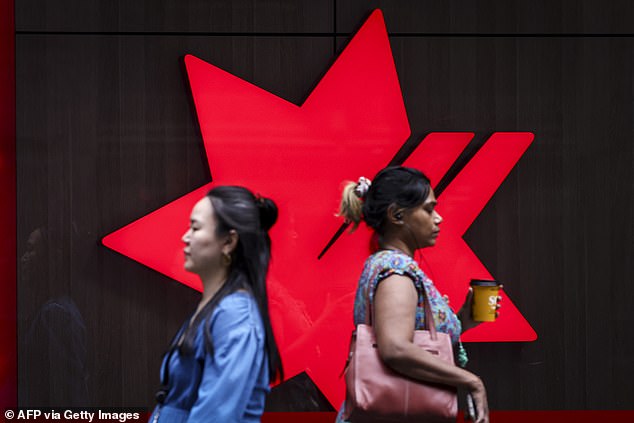NAB bank has dramatically cut interest rates for millions of Australians – here’s how much you’ll save

- NAB reduces the variable mortgage interest rate
A major Australian bank has cut variable mortgage rates even as borrowers missed out on help from the Reserve Bank.
NAB has reduced its base rate for owner-occupiers by 40 basis points, bringing the variable rate down to 6.44 percent.
The latest relief – apart from an interest rate cut by the RBA – would see a new borrower with an average mortgage of $642,121 save $170 on monthly mortgage repayments.
But it’s far from the lowest variable rate from a Big Four bank, with ANZ offering 6.14 per cent and Commonwealth Bank charging 6.15 per cent on their digital home loans.
NAB’s latest cut is a sign of intensifying competition from the big banks, even as Reserve Bank of Australia Governor Michele Bullock has hinted at another possible rate hike.
Sally Tindall, Canstar’s director of data insights, said that while the NAB offer was only for new customers, it meant borrowers had leeway with the big banks to negotiate a better deal on their loan.
“If you’re an existing customer, there’s nothing stopping you from picking up the phone and asking for a rate reduction,” she said.
While the big banks offer variable interest rates starting with a ‘six’, a Canstar analysis found that 38 smaller lenders had variable rates below that level.

A major Australian bank has cut variable mortgage rates even as borrowers missed out on help from the Reserve Bank
The Reserve Bank of Australia left cash rates unchanged at 4.35 percent this month, leaving borrowers without support, despite the US, UK, Canada, European Union and New Zealand already cutting rates this year.
Australia’s Big Four banks now expect the RBA to start cutting rates in February, with Ms Bullock stating this month that she was ‘not judging anything in or out’.
But the 30-day interbank credit market won’t see relief until August, with traders now expecting just one rate cut in 2025.
In October, the market expected four rate cuts from the RBA.
Ms Bullock said financial markets had expected global inflation to remain high regardless of whether Republican Donald Trump or Democratic Vice President Kamala Harris had won this month’s US presidential election.
“The fact that there are a lot of policies that are potentially going to be inflationary – tariffs, a lot of spending – probably didn’t matter who won, there was always going to be a bigger deficit,” she told a forum in Sydney on Thursday.
“It was just a question of whether it was lower taxes or more spending that got you there.
“There will be more government debt, so I think that’s part of what’s reflected in the bond markets.”
Australia’s unemployment rate remained at 4.1 percent in October and 36,800 jobs were created, a sign that the labor market is strong as underlying inflation remains above the RBA’s target of 2 to 3 percent at 3.5 percent.

Sally Tindall, Canstar’s director of data insights, said that while the NAB offer was only for new customers, it meant borrowers had leeway with the big banks to negotiate a better deal on their loan.




